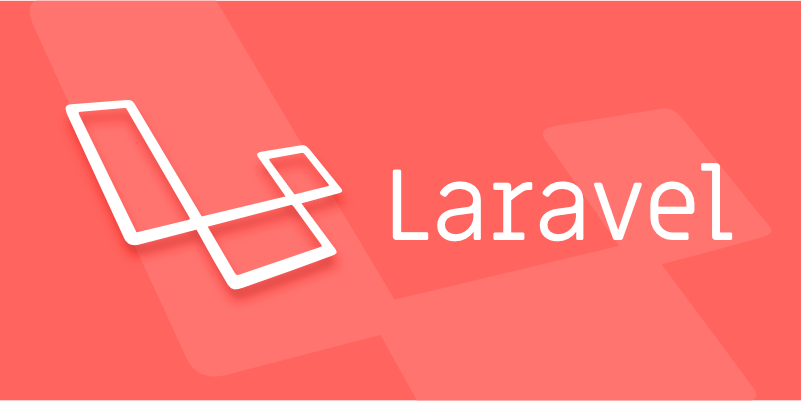Implementing Custom Authentication Logic in Laravel.
To go beyond Laravel's built-in authentication system, it can be implemented through custom authentication logic, such as handling unique login processes, third-party integrations, or user-specific authentication rules. 1. You can create a custom user provider, obtain and verify the user from non-default data sources by implementing the UserProvider interface and defining methods such as retrieveById, and register the provider in config/auth.php. 2. Custom login logic can be written in the controller, such as adding additional checks after calling Auth::attempt(), or using Auth::login() to manually authenticate users. 3. You can use middleware to perform additional verification, such as checking whether the user is in "active" state, and logging out the user and redirecting to the login page if the criteria do not meet. These three methods can be flexibly combined to meet complex authentication needs while retaining Laravel's original functional advantages.

When you need to go beyond Laravel's built-in authentication system, implementing custom authentication logic gives you the flexibility to handle unique login flows, third-party integrations, or specific user validation rules. Laravel makes it relatively straightforward to customize these parts without losing the benefits of its existing auth features.

Understanding Laravel's Authentication System
Before diving into customization, it helps to understand how Laravel handles authentication by default. Laravel uses guards and providers defined in the config/auth.php file. Guards define how users are authenticated (eg, session-based or token-based), while providers specify where to get user data from (like the database).
The default login flow usually involves checking a user's credentials against the database using the Eloquent User model. But if your app needs something different—like validating against an external API, checking two-factor tokens, or handling multiple user types—you'll need to step outside that default behavior.

Creating a Custom User Provider
One way to implement custom authentication is by building your own user provider. This allows you to fetch and verify user data from a source other than the default database setup.
To do this:

- Create a class that implements
Illuminate\Contracts\Auth\UserProvider - Implement required methods like
retrieveById(),retrieveByToken(),updateRememberToken(), etc. - Define how to retrieve and validate a user based on your logic
Once written, register your provider in config/auth.php under the providers array, pointing to your new class. Then, assign that provider to a guard so Laravel knows to use it during authentication checks.
This approach works well when you still want to use Laravel's session management or API guards but just need to change where the user data comes from.
Writing Custom Login Logic in Controllers
If you only need to tweak the login process—not completely replace the underlying system—you can write custom logic directly in your controller.
For example, after validating the input, instead of calling Auth::attempt() , you might add extra checks:
if (Auth::attempt(['email' => $email, 'password' => $password])) {
// Check if user has email verified
if (! Auth::user()->hasVerifiedEmail()) {
Auth::logout();
return redirect()->back()->withErrors('Please verify your email first.');
}
return redirect()->intended('/dashboard');
} You could also bypass attempt() entirely and manually set the authenticated user using Auth::login($user) once your conditions are met.
Some common cases where this helps:
- Multi-step login flows
- Conditional authentication based on roles or status
- Integrating with legacy systems temporary
Just remember to handle logo and session clearing properly if authentication fails partway through.
Using Middleware for Extra Checks
Sometimes, your custom authentication logic doesn't need to happen at login time. You might want to check additional conditions every time a user accesses a certain route.
In those cases, writing custom middleware is the way to go. For instance, you could build a middleware that checks if a user is "active" in your system before allowing access:
if (! $request->user()->isActive()) {
Auth::logout();
return redirect('/login')->with('status', 'Your account is no longer active.');
}Register the middleware and apply it to routes or controllers where needed. It keeps your login logic clean and separates concerns effectively.
Customizing Laravel's authentication doesn't have to be complicated. Whether you're tweaking login logic in a controller, swapping out the user provider, or adding checks via middleware, Laravel gives you the tools to stay flexible without reinventing the wheel.
It's not always obvious which method fits best at first glance, but once you understand the moving parts—guards, providers, and middleware—it becomes easier to choose the right path for your application.
Basically that's it.
The above is the detailed content of Implementing Custom Authentication Logic in Laravel.. For more information, please follow other related articles on the PHP Chinese website!

Hot AI Tools

Undress AI Tool
Undress images for free

Undresser.AI Undress
AI-powered app for creating realistic nude photos

AI Clothes Remover
Online AI tool for removing clothes from photos.

Clothoff.io
AI clothes remover

Video Face Swap
Swap faces in any video effortlessly with our completely free AI face swap tool!

Hot Article

Hot Tools

Notepad++7.3.1
Easy-to-use and free code editor

SublimeText3 Chinese version
Chinese version, very easy to use

Zend Studio 13.0.1
Powerful PHP integrated development environment

Dreamweaver CS6
Visual web development tools

SublimeText3 Mac version
God-level code editing software (SublimeText3)
 What is Configuration Caching in Laravel?
Jul 27, 2025 am 03:54 AM
What is Configuration Caching in Laravel?
Jul 27, 2025 am 03:54 AM
Laravel's configuration cache improves performance by merging all configuration files into a single cache file. Enabling configuration cache in a production environment can reduce I/O operations and file parsing on each request, thereby speeding up configuration loading; 1. It should be enabled when the application is deployed, the configuration is stable and no frequent changes are required; 2. After enabling, modify the configuration, you need to re-run phpartisanconfig:cache to take effect; 3. Avoid using dynamic logic or closures that depend on runtime conditions in the configuration file; 4. When troubleshooting problems, you should first clear the cache, check the .env variables and re-cache.
 How to create a helper file in Laravel?
Jul 26, 2025 am 08:58 AM
How to create a helper file in Laravel?
Jul 26, 2025 am 08:58 AM
Createahelpers.phpfileinapp/HelperswithcustomfunctionslikeformatPrice,isActiveRoute,andisAdmin.2.Addthefiletothe"files"sectionofcomposer.jsonunderautoload.3.Runcomposerdump-autoloadtomakethefunctionsgloballyavailable.4.Usethehelperfunctions
 How to mock objects in Laravel tests?
Jul 27, 2025 am 03:13 AM
How to mock objects in Laravel tests?
Jul 27, 2025 am 03:13 AM
UseMockeryforcustomdependenciesbysettingexpectationswithshouldReceive().2.UseLaravel’sfake()methodforfacadeslikeMail,Queue,andHttptopreventrealinteractions.3.Replacecontainer-boundserviceswith$this->mock()forcleanersyntax.4.UseHttp::fake()withURLp
 How to implement a referral system in Laravel?
Aug 02, 2025 am 06:55 AM
How to implement a referral system in Laravel?
Aug 02, 2025 am 06:55 AM
Create referrals table to record recommendation relationships, including referrals, referrals, recommendation codes and usage time; 2. Define belongsToMany and hasMany relationships in the User model to manage recommendation data; 3. Generate a unique recommendation code when registering (can be implemented through model events); 4. Capture the recommendation code by querying parameters during registration, establish a recommendation relationship after verification and prevent self-recommendation; 5. Trigger the reward mechanism when recommended users complete the specified behavior (subscription order); 6. Generate shareable recommendation links, and use Laravel signature URLs to enhance security; 7. Display recommendation statistics on the dashboard, such as the total number of recommendations and converted numbers; it is necessary to ensure database constraints, sessions or cookies are persisted,
 How to run a Laravel project?
Jul 28, 2025 am 04:28 AM
How to run a Laravel project?
Jul 28, 2025 am 04:28 AM
CheckPHP>=8.1,Composer,andwebserver;2.Cloneorcreateprojectandruncomposerinstall;3.Copy.env.exampleto.envandrunphpartisankey:generate;4.Setdatabasecredentialsin.envandrunphpartisanmigrate--seed;5.Startserverwithphpartisanserve;6.Optionallyrunnpmins
 How to seed a database in Laravel?
Jul 28, 2025 am 04:23 AM
How to seed a database in Laravel?
Jul 28, 2025 am 04:23 AM
Create a seeder file: Use phpartisanmake:seederUserSeeder to generate the seeder class, and insert data through the model factory or database query in the run method; 2. Call other seeder in DatabaseSeeder: register UserSeeder, PostSeeder, etc. in order through $this->call() to ensure the dependency is correct; 3. Run seeder: execute phpartisandb:seed to run all registered seeders, or use phpartisanmigrate:fresh--seed to reset and refill the data; 4
 How to build a REST API with Laravel?
Jul 30, 2025 am 03:41 AM
How to build a REST API with Laravel?
Jul 30, 2025 am 03:41 AM
Create a new Laravel project and start the service; 2. Generate the model, migration and controller and run the migration; 3. Define the RESTful route in routes/api.php; 4. Implement the addition, deletion, modification and query method in PostController and return the JSON response; 5. Use Postman or curl to test the API function; 6. Optionally add API authentication through Sanctum; finally obtain a clear structure, complete and extensible LaravelRESTAPI, suitable for practical applications.
 Using Events and Listeners in Laravel.
Jul 26, 2025 am 08:21 AM
Using Events and Listeners in Laravel.
Jul 26, 2025 am 08:21 AM
Using events and listeners in Laravel is an effective way to decouple main logic. 1. Create events and listeners can be generated and bound to EventServiceProvider through the Artisan command or enable the automatic discovery mechanism. 2. In actual use, it is necessary to note that an event can correspond to multiple listeners, queue failure retry policy, keep the listener lightweight, and register event subscribers. 3. During testing and debugging, you should confirm the event triggering, listener binding, and queue drive status, and set QUEUE_CONNECTION=sync to perform synchronously to facilitate troubleshooting. 4. Advanced tips include dynamically controlling the execution or registration of the listener according to conditions, but it is recommended to advanced users. Mastering these key points can help improve code control







